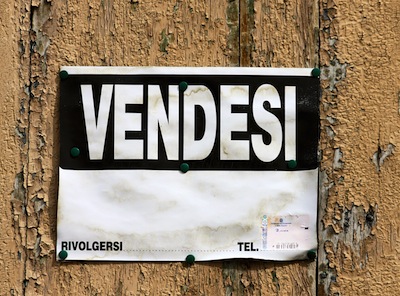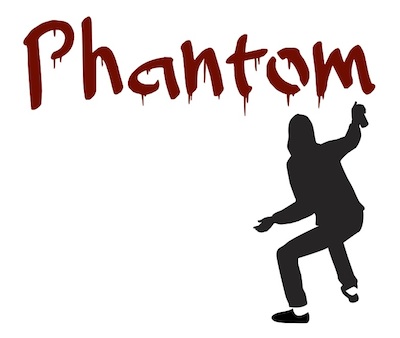Demons & Daimons
This is the first of what I plan to be an occasional series. It's about the things on one hand that utterly do you in, and on the other hand, that drive you to the heights of motivation and inspiration. Demons torment us. Daimons are the spark that drives our creativity to new heights. Today we are going to look at one common item from each of these categories, and some ideas for coping with them.

The Sales Demon
Sales is one of the toughest things for most highly creative people. You are so motivated by your creative vision, so hyper-focused on your work, and the idea of having to go out and find a way to make it pay for itself is so damned mundane. Selling is traumatic for many of us. But don't get me wrong, we love it when work sells, especially when it sells for a good price. Unfortunately though, the process of finding a buyer is so emotionally charged, so threatening, that many of us simply refuse to engage it.
Add to this emotional charge, the fact that there is what might be called a glut of good art being made, and a very limited range of qualified buyers. To be a qualified buyer, one must appreciate the art being sold, understand how to map that value on to a realistic dollar figure, and have those dollars available to spend buying it. All that is a complicated way to say the supply far outstrips the demand. And what that means is that a lot of very good art goes unsold.
Nothing in the two preceding paragraphs comes as a surprise to readers of Outside the Lines. But what can we do about it? You can't grab people by the collar and force them to write a check for your work. You can't make them like it. You can lower your prices below your cost in order to try to move your work, get it into the hands of collectors, and out of your precious little storage space. But that is not a solution really. It doesn't always even work.

The best thing you can do is to set reasonable prices that cover your costs and feel respectful of the work, and of you, and of the patron you hope will buy it. In other words, a fair price. Once you have set this price, stick with it and forget about it. If you have gallery representation you'll work out that price with their help. If you are focused on selling in shows and juried festivals, you will be on your own to work out your pricing. But the crucial thing is to settle comfortably on the price and stop thinking about it. Don't second guess yourself. Don't change your prices with every show you enter. Maybe, once a year, it would make sense to reevaluate your pricing. But the important thing to understand is that buyers are a special and rare commodity, and you won't find one under every bush. Too much energy spent on fiddling with your prices will not change that.
Now we come to the really important part. Once you have set your pricing policy, get to work doing what you do. Make more art. Make lots more art, and price it consistently with that policy. The most significant thing in attracting attention to your work is not the price. What attracts interest, and ultimately buyers, is visibility, familiarity, and excitement. If you have a half dozen paintings that you trot out to every show, you will be old news very soon. Those paintings might be exquisite, but they soon become background if they are all you've got. But if you continue at a furious pace to produce more and more work that pushes your skill and your vision, and keep pushing this new work out into the public eye, the buyers will grow familiar with you. They will become comfortable with your style and your artistic voice. I cannot over emphasize the importance of this. Artists push the envelope. Buyers do not. Buyers buy what makes them feel good. And familiarity feels good if it is fresh and alive. So the key to mastering the sales demon is to chain him to a stake and forget about him. Be consistent and be productive and let your work find its buyers.
The Sales Daimon

If the lack of sales can throw you into a tailspin, a string of sales, especially at good prices, can put you in the clouds. Steady sales validates your work and your pricing policy. It would seem to be the best innoculate against the sales demon. Steady sales over time might even indicate that it is time to start making measured adjustments upward in your prices. But sales are deceptive. They do not mean you are good. The paint factory of the late Thomas Kincaid being a case in point.
Steady sales only mean you have found a market for what you do.
The biggest challenge in steady sales is that we are all human. When we get positive reinforcement, we tend to get addicted to it. The challenge in steady success is to stay true to your genius rather than adjusting to what the market wants. Your unique creative genius is why you started getting those steady sales in the first place. And at times it might just take you in a direction that startles, disturbs, or even alienates your buying audience. Remember, as we said above, artists push the envelope. Buyers do not. It may well be that your career moves in cycles where you push ahead of your audience, sales fade, and then your audience begins to catch up and sales pick up. But if you are to be the innovative creator that you were called to be, you will learn to respect rather than fear this phenomenon, and understand that demons and daimons often spring from the same primordial spark within us.
Sharing the Soapbox
Recently one of our readers asked if we had thought about including guest articles in Outside the Lines, or allowing readers to contribute. That question has spurred our thinking about the original and long term vision for what Windhook and Outside the Lines are all about—creative community. As it stands today, Outside the Lines is pretty much a one way street. We write, you read. But this was always intended to be just one aspect of what we do here.
As the germ of the idea for Outside the Lines was forming a couple of years ago, the concept included a web site with a private member area where subscribers could engage in conversations, share ideas, submit articles, and interact with each other to stimulate creativity. The idea was to use the range of interactive internet tools to take the Windhook concept into cyberspace. As it stands today, Outside the Lines has not reached that level of sophistication. We have been very busy for the past few months just getting the basic email journal component in place and working smoothly.

This question about guest contributors has rekindled our thinking and freshened our energy for the bigger picture. It will take a lot more work to get the web site up to the full functional scope of that original vision, but introducing guest contributors is a simple way to move one step closer to the dynamic idea we began with. So we would like to know what you think about all of this. Here are a few questions we would like to get your feedback on. You can just use the Contact Us link below to tell us what you think.
Do you like these ideas?
What sorts of topics and features would you like to see us add to the mix, both in the emails and in the web site?
Are you a writer? Would you like to submit an article?
Do you know a writer you would like to see us try to get a contribution from?
And now that we have opened this can of worms, something else comes to mind. All of the writing we have done here so far is about the challenges, psychology, and process of making your creative way. But that's what computer programmers call metadata, and what script writers call backstory. Writing about creativity is different from creative writing. So here's another question for you.
Would you be interested in seeing short creative writing and poetry pieces (by us or by others) added to the mix?
And since the worm can is open, what about photography and visual arts? We can post any sort of images that we can get permission for. So if you or someone you know have a contribution to make, whether it be verbal or visual, let us know. And by all means, tell us what you think of these ideas!
Tiny Phantom Project Update

The Phantom Project is moving into its second show. We talk about it here from time to time to illustrate how participation in such a community service activity can enhance your presence in your local community. Today we will not write much about current developments with the Phantom Project, even though there are many. Instead, we send you to a local radio interview that tells the story. I was interviewed about the Phantom Project for a local NPR program. Take note that half way through the interview, the questions turned briefly to my own artwork. And that sort of exposure and enthusiasm is one major reason that one engages in such an endeavor. As you know, I tend to be very shy about expressing myself, but the interviewers, Crissa Hewett and Steven deLuque did a great job of prying the story out of me. Here is the interview.
|







